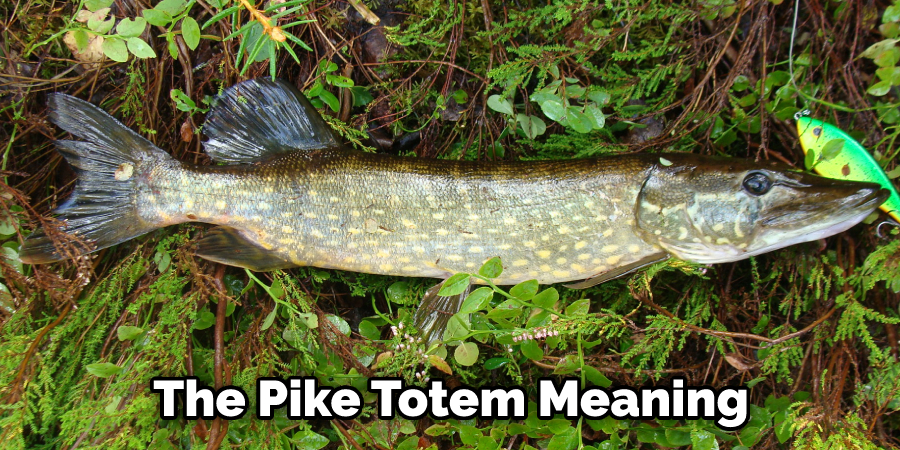Etymology and Origin: Pike Meaning

Pike meaning – The term “pike” has a rich and multifaceted history, with its roots in ancient languages and evolving meanings throughout the centuries.
In the realm of weaponry, a pike, a formidable spear, wields unmatched reach. Yet, on the hardwood courts, the term “lift” takes on a different meaning. Just as the pike extends its presence, the “lift” in basketball elevates players to new heights, granting them the ability to soar through the air with effortless grace.
As they rise above the rim, their bodies become instruments of athleticism, showcasing the captivating artistry of this beloved sport.
The word “pike” is derived from the Middle English word “pike,” which in turn originated from the Old French word “pique.” The Old French word “pique” is believed to have come from the Latin word “picca,” meaning “pointed stick” or “spear.” This linguistic connection highlights the weapon’s primary function as a sharp, pointed instrument used in combat.
In the realm of fishing, a pike is a formidable predator, its sharp teeth and powerful jaws making it a fearsome foe. Yet, in the world of basketball, the term “perch” takes on a different meaning, as perch in basketball refers to a player’s ability to maintain an elevated position on the court, ready to launch a shot or grab a rebound.
While the pike may strike fear into the hearts of its prey, the player who masters the perch commands the respect of their opponents.
Semantic Evolution
Over time, the meaning of “pike” has expanded beyond its original military context. In the 16th century, the term began to be used to refer to a type of fish with a long, pointed snout. This usage likely stems from the fish’s resemblance to the weapon, with its elongated body and sharp, protruding mouth.
In the 19th century, the term “pike” was further extended to include a type of road or turnpike, a paved or macadamized road that charges a toll for its use. This usage may have arisen from the resemblance of the road’s straight, narrow path to the pointed shape of the weapon.
Pike, the formidable freshwater predator, shares its watery realm with the perch, a sprightly and agile fish. The perch, with its distinctive vertical stripes and sharp spines, perch meaning is known for its feisty nature and is often found in abundance near the surface of lakes and rivers.
Returning to the pike, its formidable size and razor-sharp teeth make it a formidable predator, feared by all who share its aquatic habitat.
Types and Characteristics

Pikes are a diverse group of fish that inhabit various aquatic environments. They are voracious predators, and their distinctive physical characteristics and behavioral traits set them apart from other fish species.
There are several types of pikes, each with its unique features and adaptations. Let’s explore the different types of pikes and their characteristics:
Northern Pike
Northern pike, also known as Esox lucius, is the most common type of pike found in North America and Eurasia. They are typically large fish, with an average length of 3-4 feet and a weight of 10-20 pounds. Northern pikes have a long, slender body with a pointed snout and sharp teeth. Their coloration varies depending on their habitat, but they typically have a dark green or olive back with yellow or golden sides and white or cream-colored belly. Northern pikes are ambush predators that lie in wait for their prey, which consists of smaller fish, amphibians, birds, and even small mammals.
Chain Pickerel
Chain pickerel, scientifically known as Esox niger, is a smaller species of pike native to eastern North America. They are typically 1-2 feet long and weigh 2-4 pounds. Chain pickerel have a similar body shape to Northern pike, but their coloration is more vibrant. They have a dark green or olive back with a chain-like pattern of dark spots running along their sides. Chain pickerel are also ambush predators, but they prefer to inhabit shallow, weedy waters where they can easily hide from their prey.
Muskellunge
Muskellunge, or Esox masquinongy, is the largest member of the pike family. They can reach lengths of up to 6 feet and weigh over 50 pounds. Muskellunge have a similar appearance to Northern pike, but they have a more robust body and a wider, flatter head. Their coloration is also darker, with a dark brown or black back and sides with irregular yellow or golden spots. Muskellunge are apex predators that inhabit large lakes and rivers. They are known for their aggressive behavior and their ability to take down large prey, including other fish, waterfowl, and even small mammals.
Cultural Significance and Symbolism
Pike has been a significant symbol in many cultures throughout history, representing strength, power, and determination.
Pike has been depicted in art, literature, and folklore as a symbol of courage and strength. In ancient Egypt, pike was associated with the goddess Neith, who was known for her bravery and ferocity. In Roman mythology, the pike was associated with the god Mars, who was known for his military prowess. In Norse mythology, the pike was associated with the god Thor, who was known for his strength and power.
Pike has also been used as a symbol of determination and perseverance. In the United States, the pike is the state fish of Minnesota, which is known for its harsh winters and resilient people. The pike is a symbol of the state’s ability to overcome challenges and thrive in difficult conditions.
Pike in Art
Pike has been depicted in art throughout history. In the famous painting “The Battle of San Romano” by Paolo Uccello, pike are depicted as being used by the Florentine army to defeat the Sienese army. In the painting “The Arnolfini Portrait” by Jan van Eyck, a pike is depicted hanging on the wall behind the couple, symbolizing the husband’s strength and power.
Pike in Literature
Pike has also been featured in literature. In the novel “The Old Man and the Sea” by Ernest Hemingway, the protagonist Santiago catches a giant pike after a long and arduous battle. The pike is a symbol of Santiago’s strength and determination, as well as his struggle against the forces of nature.
Pike in Folklore, Pike meaning
Pike has also been featured in folklore. In many cultures, pike are believed to be magical creatures with the ability to grant wishes. In some cultures, pike are also believed to be able to protect people from evil spirits.
In the depths of a misty lake, where the shadows dance like specters, a solitary pike lurks beneath the surface, its piercing gaze fixed on its unsuspecting prey. Like a deadly harpoon, its snout conceals a razor-sharp row of teeth.
Yet, amidst this aquatic realm, there exists a curious phenomenon known as a “floater,” a tantalizing morsel that hovers just beyond the pike’s reach, teasing its relentless hunger. Floater meaning eludes the pike’s grasp, leaving it forever tantalized by the promise of a satisfying meal.
In the realm of combat, the pike stands tall, a formidable weapon wielded by warriors. Its sharp tip and unwavering presence evoke an aura of strength and precision. Yet, in the world of basketball, the term “pike” takes on a different meaning.
It describes a gentle touch, a delicate flick of the wrist that propels the ball towards the hoop in a graceful arc. Like a basketball floater , the pike maneuver is a testament to the finesse and artistry that can be found within the confines of the court.
Its subtle beauty is a reminder that even in the most physical of sports, there is always room for elegance and precision.